
How to Transfer Apple iPhone XR Data to iPhone 12 A Complete Guide | Dr.fone

How to Transfer Apple iPhone XR Data to iPhone 12: A Complete Guide
Apple announced a line-up of iPhones with four new devices in 2020. The series is called the iPhone 12 series that has four handsets of different sizes and price ranges. The iPhone 12 series include iPhone 12, iPhone 12 Mini, iPhone 12 Pro, and iPhone 12 Pro Max. These are the company’s first-ever 5G devices. They surely took a step into the future of technology with the 12 series.
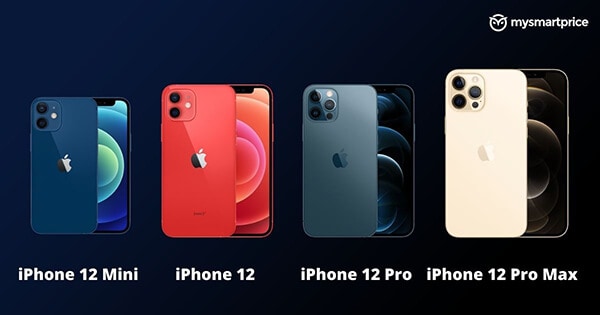
The device is considered lighter than the iPhone SE launched in 2020. iPhone 12 Pro Max holds an outstanding camera system for high-quality image processing. Besides, the introduction of A14 SoC has encouraged the exceptional performance of all four models. Each of the series models is secured with suitable features and new capabilities. Let’s take a glance at the relevant specifications and iPhone 12 price.
Part 1: Apple iPhone 12 Series Specifications
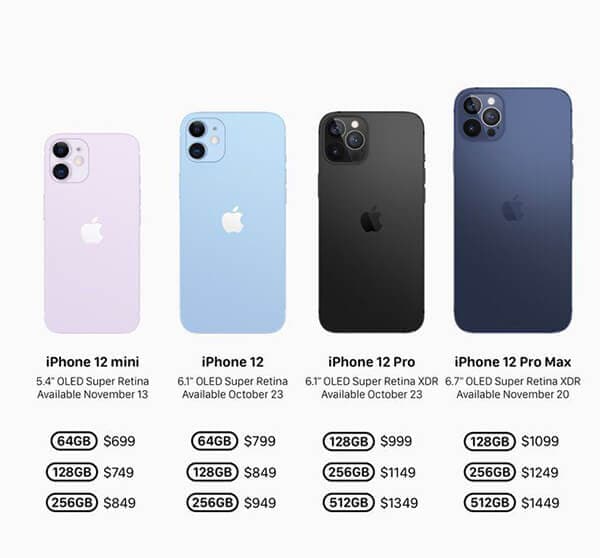
To mention the iPhone 12 series specifications, these models are secured with an SoC of Apple A14 Bionic. All 4 of them consist of DRAM. The displays of these smartphones are quite satisfactory.
Display: The iPhone 12 Mini and iPhone12 have a display of 5.42” OLED (2340 x 1080) and 6.06” OLED (2532 x 1170). On the other hand, the magnificent iPhone 12 Pro has a display of 6.06” OLED (2532 x 1170) and 6.68” OLED (2778x1284).
Size & Weights: The size concerning height, width, and depth of both iPhone 12 and iPhone 12 pro are the same at 146.7 mm, 71.5 mm, 7.4 mm. Besides, the iPhone Mini stands at a height width and depth of 131.5 mm, 64.2 mm, and 7.4 mm. The iPhone 13 Pro max has a height of 160.8 mm, a width of 78.1 mm, and a depth of 7.4 mm. While the iPhone Mini weighs the lightest with 135g, iPhone 12 max weighs the heaviest (228 g). Both iPhone 12 and iPhone 12 Pro remain at 164g and 189g, respectively.
Wireless Charging: Each of the iPhone 12 series models supports MagSafe Wireless Charging up to 15 W. They are also Qi Compatible (7.5 W). Now, coming to the camera quality, all four models are secured with a front camera of 12 MP f/2.2.In rear camera setup, iPhone 12 Mini, iPhone 12, and iPhone 12 Pro have a main camera of 12 MP 1.4µm, 26mm eq. f/1.6, Optic OIS. iPhone 12 Pro Max comes with the main camera of 12 MP 1.7µm, 26mm eq. f/1.6.
Camera: The high-quality telephoto camera of the iPhone 12 Pro is 12 MP, 52mm eq. f/2.0 OIS. For iPhone 12 Pro Max is 12 MP, 65mm eq. f/2.2 OIS. The entire iPhone series model has an ultra-wide camera of 12 MP 13mm eq. f/2.4. The splash, water, and dust resistance feature with IP68 for up to 6m and 30 minutes keeps the phone durable.
iPhone Series devices hold dual-SIM support with nano-SIM and eSIM. Both iPhone 12 Mini and iPhone 12 come in distinct storage capacities like 64 GB, 128 GB, and 256 FB. The iPhone 12 Pro and Pro Max are available in the storage of 128 GB, 256 GB, and 512 GB.
Part 2: Transfer old iPhone data to iPhone 12
We know that the excitement of buying a new iPhone is real. However, it’s important to do one thing before jumping into the camera quality. And that’s data transfer. You do not want your old phone data to be gone with the old device, do you? We hope not. Here are some of the tactics by which you can transfer the old iPhone data to the new iPhone 12
2.1 Through iCloud
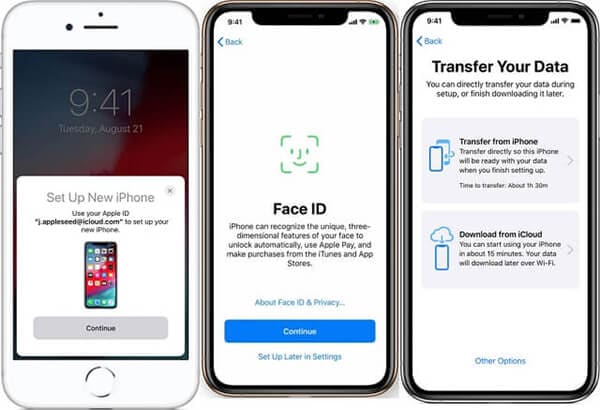
Before transferring, make sure your data is backed up. For that, connect the old iPhone with the WiFi and then go to “Settings.” Next, tap your name and then on “iCloud.” Next, select the “Backup Now” option and wait for the process to get completed. After completing the backup, follow the steps given below.
Step 1: First, turn on the new device to see the “Hello” screen. Now, follow the instructions appearing on the screen. Once you notice the WiFi screen, tap a WiFi network to join. Keep following the steps till the “Apps & Data” screen shows up. Tap on “Restore from iCloud.”
Step 2: Sign in to your iCloud with relevant credentials like Apple ID and password. Choose a backup but make sure to check the date and size.
If you have bought iTunes or App store content with multiple IDs, sign in with those accounts too.
Step 3: The restore process will be initiated. Make sure to be connected and wait till the process gets completed successfully. Once done, continue with the other steps to complete the setup process successfully.
2.2 Through iTunes or Finder
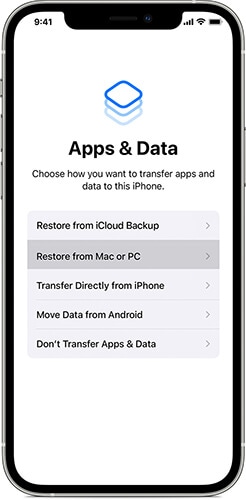
Start with the backup process by opening iTunes. Now, connect your iPhone with the PC. After it gets connected, choose your iPhone on the top toolbar. To transfer the data related to Health and Activity/saved passwords, choose the “Encrypt backup” option. Next, input a password and click “Back Up Now.”
To transfer the data through iTunes or Finder, launch your new device. Once the “Hello” screen appears, follow the instructions appearing on the screen. As soon as you note the “Apps & Data Screen,” tap on “Restore from Mac or PC.” Connect the new device to PC/Mac and open the iTunes/Finder window. Once your device name is visible on the screen, tap it.
Select “Restore Backup” to choose a “Backup.” Ensure that the size and data are accurate. To restore from an encrypted backup, input the password. The restoration process will start. Now, wait for the entire process to get completed and then move on to the remaining setup steps.
Part 3: Transfer Android Data to iPhone 12
The methods mentioned above can be time-consuming. In that case, it’s best to opt for a simple process that does not require too much work. For example, Dr.Fone - Phone Transfer all is an efficient and easy-to-use phone switch app.
As the name signifies, this App can help you with iPhone 12 transfer data in a few minutes. Experienced developers develop it for both iOS and Android users. So, you can transfer data from any of the Apple iPhone XR devices to the new iPhone 12.
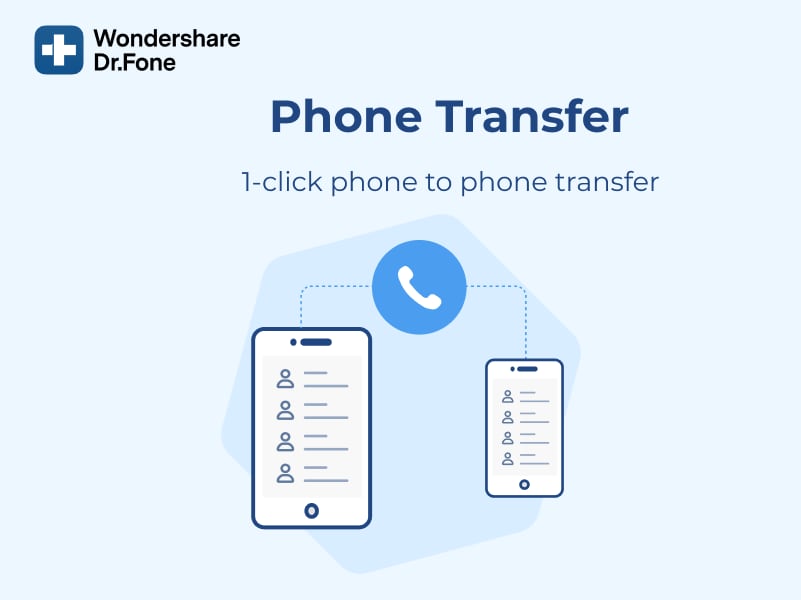
With Dr. Fone, you can migrate 13 files of distinct size to the new iPhone 12. Here’s a glimpse of the files below
Contact, photo, videos, voicemail, wallpaper, calendar, and many more
To transfer data through Dr. Fone, follow the easy steps mentioned below.
Step 1: First, connect both the old device and new iPhone 12 to your PC/Mac with USB.
Step 2: Now, launch the Dr. Fone - Phone Transfer and select the app
Step 3: Once the app starts, you will note a device detected as a source. Similarly, there will be other devices detected as destinations. Then, you will be given the option to flip the source and destination. For that, click on the “Flip” option.
Step 4: After selecting the Apple iPhone XR device status, mark the checkboxes beside the files for transferring. Once done, tap on the “Start Transfer” button appearing on the screen.
You can select “Clear data before copy” to delete the data from the destination device before transferring. It will speed up the entire process.
Conclusion
Hopefully, you got a clear idea of how to transfer data to iPhone 12. Dr. Fone - Phone Transfer is one of the finest names for data recovery and data transfer between devices. They have distinct outstanding products that are efficient and useful for the users. One of the best things about the application is that you can transfer the data regardless of the mobile operating system. Be it an iOS or Android device, follow the steps provided above, and that’s it. The iPhone 12 data transfer process is quick, easy, and requires less effort.
How to Transfer Data from Apple iPhone XR to ZTE Phones
Moving your contacts, call logs, calendar, photos, music, videos and apps from your iPhone or iPad to your ZTE phone is essential. But a lot of time the process can be very difficult, not to mention the time consuming task of transferring every single piece of data individually. If you wanted to transfer data from your iOS device to your ZTE phone, you would have to go through a lengthy guide, probably off the internet that would be complicated and time consuming.
Part 1: How to transfer data from Apple iPhone XR to ZTE with 1 click
Dr.Fone - Phone Transfer is that phone data transfer tool which can help you to save your time when you need to transfer data from Apple iPhone XR to ZTE phones. In fact, apart from the data transfer between iOS and ZTE phones, Dr.Fone - Phone Transfer supports data transfer between lots of Android and iOS devices.
Dr.Fone - Phone Transfer
Transfer data from Apple iPhone XR to ZTE in 1 click!
- Easily transfer photos, videos, calendar, contacts, messages and music from Apple iPhone XR to ZTE.
- Takes less than 10 minutes to finish.
- Supports iPhone 15/14/13/12/11/X and former and the latest iOS 17 fully!

- Works perfectly with Apple, Samsung, HTC, LG, Sony, Google, HUAWEI, Motorola, ZTE, and more smartphones and tablets.
- Fully compatible with major providers like AT&T, Verizon, Sprint and T-Mobile.
- Fully compatible with Windows 10 or Mac 14.
4,513,943 people have downloaded it
Note: When you have no computer at hand, you can just get the Dr.Fone - Phone Transfer (mobile version) from Google Play. After installing this Android app, you can download iCloud data to your ZTE directly, or connect iPhone to ZTE for data transfer using an iPhone-to-Android adapter.
It can be very easy to sync contacts to a new phone especially if you are using a service like Google, but it is all the other stuff such as pictures, videos, text messages and your calendar that can be hard to move unless you are tech savvy. Dr.Fone - Phone Transfer makes it so easy, all you need is to simply install this software utility and then connect both phones to a PC. Both phones must however be connected at the same time in order for this service to work. This means that you cannot back up contents from your iOS device to transfer at a later time. This problem is however negated by the fact that it will take a very short time to transfer everything, so there is no need to back-up anything.
Steps to transfer data from Apple iPhone XR to ZTE by Dr.Fone - Phone Transfer
So imagine how easy it would be to transfer data from your iPhone to your ZTE phone in just one click.
Step 1: Get Connected
Assuming that you have downloaded and installed Dr.Fone - Phone Transfer on your computer (there are versions for both Windows and MAC), choose “Switch”.

Then connect your iPhone and ZTE phones to your computer via USB cables. Once you have done this correctly and the program has detected both phones, you should see the following window.
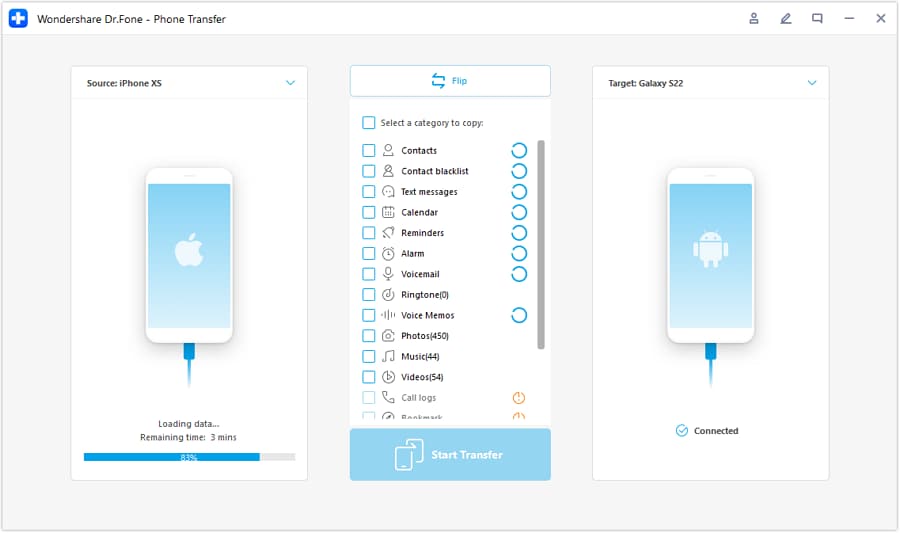
Step 2: Let’s Transfer Data
In the screenshot below you will notice that all the data that can be transferred from the iPhone to your ZTE phone is listed in the middle. This includes such data as contacts, photos, music, calendar and messages. Select all of the data that you want to transfer to the ZTE phone and then click on “Start Transfer”. All of the data will then be transferred to the ZTE phone in a process that looks something like this;
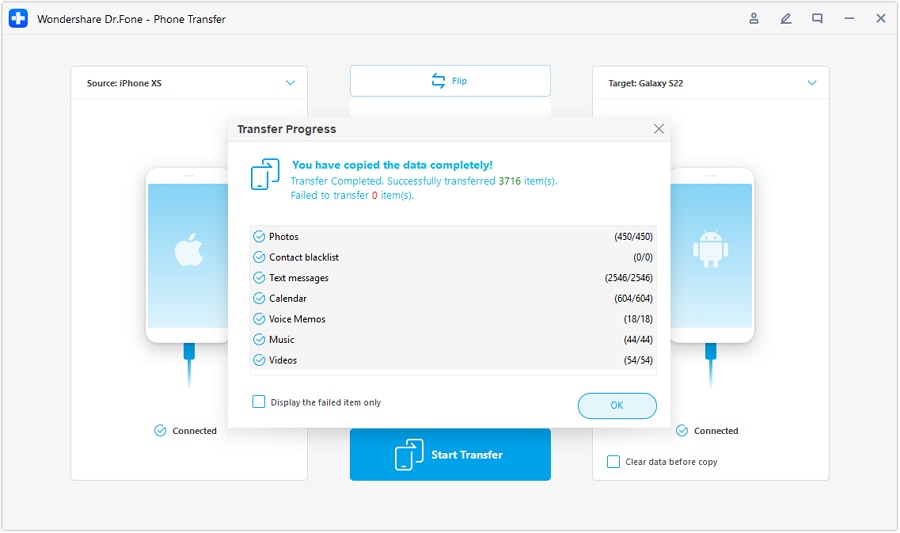
Part 2: Which ZTE devices do you use?
ZTE devices keep getting better; the following are some of the best ZTE phones in the market. Is yours one of them?
1. The ZTE Sonata 4G: This Android 4.1.2 Smartphone comes with a 4 inch 800 x 480 TFT screen. It also has a 5 megapixel camera and a 4GB memory. But perhaps the most impressive feature is its 13-day on standby battery life.
2. The ZTE ZMax: this phablet comes with an internal memory of 16GB but can support up to 32GB via MicroSD. It also has 2 cameras; a front 1.6 megapixel and a back 8-megapixel.
3. The ZTE Warp Zinc: This phone has 8GB memory capacity that can be expanded to 64GB. It also comes with a front and rear camera of 1.6 megapixel and 8 megapixel respectively.
4. The ZTE Blade S6: Its compact design has made this Smartphone a favorite to many. This Android 5.0 Lollipop phone has a memory capacity of 16GB. It also comes with a 5 megapixel front facing camera.
5. The ZTE Grand X: It is the most affordable of all ZTE Smartphones and its Qualcomm processor also runs on the Android OS. Its internal memory capacity is 8GB.
6. The ZTE Grand S Pro: This phone’s most impressive feature is the full HD front facing 2 megapixel camera. It also has a rear camera that is a 13 megapixel. It has an internal memory of about 8GB.
7. The ZTE Speed: This Android 5.0 Lollipop has a rear 2 megapixel camera and an internal memory of 8GB. Its battery promises up to 14 hours of talk time.
8. The ZTE Open C: This phone runs the Firefox OS although this can be rehashed to the Android 4.4 platform depending on what you prefer. It comes with a 4GB internal memory.
9. The ZTE Radiant: This Android Jelly bean Smartphone has a 5 megapixel rear camera and a 4GB memory capacity.
10. The ZTE Grand X Max: this one comes with a 1 megapixel front camera and an 8 megapixel HD rear camera. It has an internal memory of 8GB and a RAM capacity of 1GB.
Easy Methods: How To Transfer Pictures From Apple iPhone XR to PC
Photo transfer from your iPhone to your PC is a common practice for various reasons. It can free up your device’s storage space, create backups, or simply edit and organize your photos on a larger screen.
Thankfully, there are various methods to transfer pictures from your iPhone to your PC, providing flexibility to users based on their preferences and convenience. Read our comprehensive guide on how to transfer pictures from Apple iPhone XR to PC. This article covers step-by-step instructions so you can easily and efficiently manage and transfer your iPhone photos to your computer while preserving your cherished memories.
Part 1: How To Transfer Pictures From Apple iPhone XR to PC with iCloud
One of the widely used and efficient methods to transfer pictures from your iPhone to a PC is through iCloud, Apple’s cloud-based service. iCloud provides seamless integration across Apple devices, allowing users to sync and access their photos and videos effortlessly.
However, even if your PC is using other operating systems, such as Windows, you can still use iCloud for Windows to save and transfer your iPhone photos from iCloud.
How to transfer iPhone photos to a computer using iCloud:
Step 1: Make sure you have synced iCloud photos on your iPhone.
On your iPhone Settings, go to your profile and tap iCloud. Then, select Photos and turn on the switch next to “Sync this [device].” Otherwise, go to iCloud settings > iCloud Drive, and switch on “Sync this iPhone.”
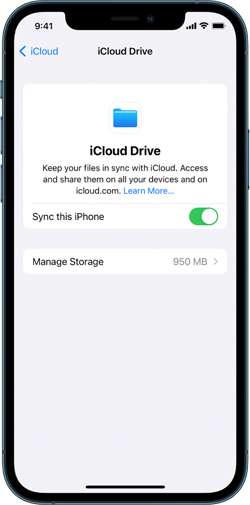
Step 2: Set up your iCloud for Windows.
Open iCloud for Windows and ensure you’re signed in with your Apple ID. Next to Photos, select Options > iCloud Photos. Click “Done” and “Apply” to save the changes and close the window.
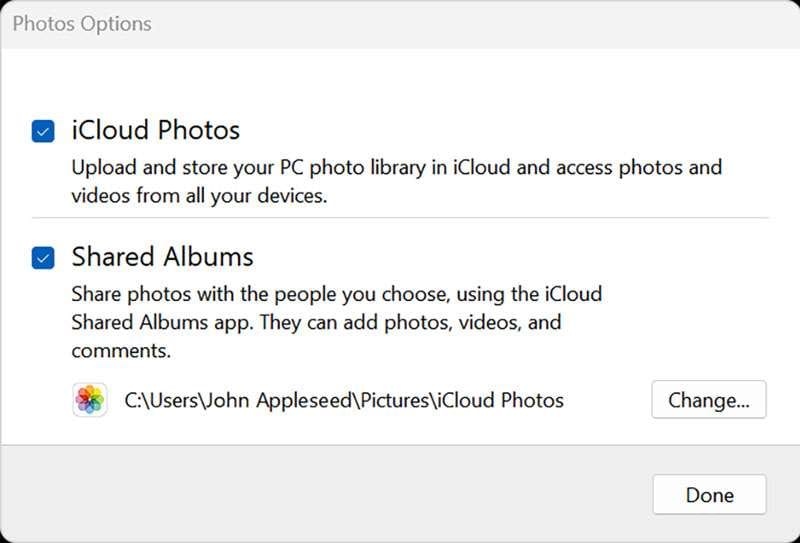
Step 3: Keep iPhone photos on PC.
Open iCloud Photos and select the images you want to transfer to your PC. Right-click to open a drop-down menu and choose “Always keep on this device.”
That’s it! Now, you can find your iPhone Photos on your computer.
Part 2: How To Transfer Pictures From iPhone with Google Drive
Another convenient way to transfer iPhone pics to a computer is through Google Drive. As a cloud-based storage solution, Google Drive allows users to seamlessly store, manage, and share files, including photos, across different devices.
If you already have a Google account, you can jump right into Google Drive without signing up. However, be aware that the free version only gives you 15 GB of space. If you need more room, you’ll have to sign up for a subscription.
How to transfer iPhone pictures to a computer with Google Drive:
Step 1: Set up your Google Drive.
Open Google Drive on your iPhone. Once opened, tap the multicolored + symbol and select “Upload” > “Photos and Videos.” If prompted, grant access to all photos by tapping “Allow Access to All Photos.”
Step 2: Upload your iPhone photos on Google Drive.
Browse through your iPhone albums to locate the specific photos you wish to upload. Hold and tap to select multiple photos. Then, tap “Upload” to upload your iPhone photos to Google Drive.
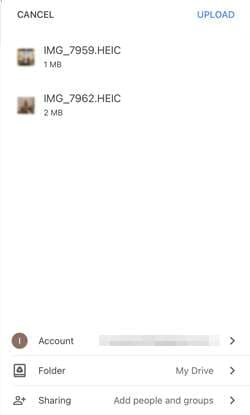
Optional: Automatic backup or sync with Google Photos
For those seeking automatic backups, open Google Photos, tap your profile image, navigate to “Google Photos settings,” and select “Backup & Sync.” Toggle “Backup & Sync” to On for continuous backups.
Step 3: Transfer your iPhone photos from Google Drive to your PC.
Once your photos are stored on Google Drive, proceed to save and transfer them to your PC. Select the desired photos in Google Drive, and click “Download.”
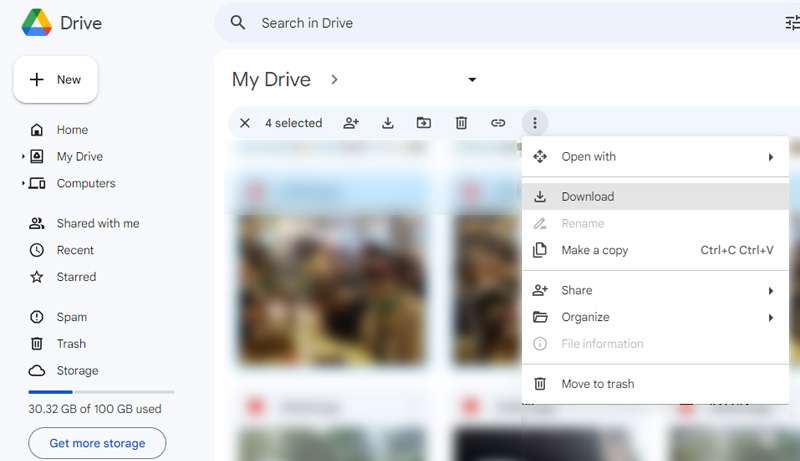
To save all photos from a specific Google Drive folder, open Google Drive and select “My Drive.” Locate the intended folder, and click the three dots to open the drop-down menu. Select “Download,” and all photos and files within the folder will be saved to your computer in ZIP format.
Part 3: How To Transfer Pictures From iPhone with iTunes
You can also make the most of iTunes to secure your iPhone with backups, keep it up-to-date, or synchronize content between your iOS device and your computer in both directions. Even if you’re a Windows PC user, there’s no need to fret. Although iTunes is an Apple product, it’s also available for Windows use.
To get started, make sure that you have iTunes for Windows installed or update your existing version to at least iTunes 12.5.1. Once done, follow the instructions below.
How to transfer iPhone pics to a PC using iTunes:
Step 1: Connect your device to your computer.
Plug in your iPhone to your computer using a USB cable.
Step 2: Grant access to your iPhone Photos.
If your phone is asking you to Trust This Computer, tap “Trust” or “Allow to proceed.”
Step 3: Open your computer’s Photos app.
Go to the Start menu on your PC. Search and select Photos to open the Photos app.

Step 4: Import your Photos to your PC.
Within the Photos app, click on Import > From a USB device and follow the instructions on the screen. You can choose specific photos for the transfer and decide where to save them on your PC. Remember to make sure that the photos are saved on the Apple iPhone XR device rather than stored in the cloud.
Finally, allow a few moments for the system to detect and transfer the selected photos.
Part 4: How To Quick Transfer Pictures From Apple iPhone XR to PC
If you find the above methods difficult, there is a quick and easy way to transfer photos from your iPhone to a PC with Dr. Fone’s Export All Data feature. With this feature, there’s no need to navigate through various locations to just locate and transfer files from your iPhone.
Dr.Fone - Phone Manager (iOS)
Transfer Photos from Computer to iPod/iPhone/iPad without iTunes
- Transfer, manage, export/import your music, photos, videos, contacts, SMS, Apps, etc.
- Back up your music, photos, videos, contacts, SMS, Apps, etc., to the computer and restore them easily.
- Transfer music, photos, videos, contacts, messages, etc., from one smartphone to another.
- Transfer media files between iOS devices and iTunes.
- Fully compatible with iOS 7 to iOS 15 and iPod.
3981454 people have downloaded it
Dr. Fone’s Export All Data feature offers some great functionalities, including:
- Comprehensive data export, including Photos, Contacts, Messages, Voicemail, and more
- Encrypted data transfer and backups
- Available for iOS and Android devices
- Regular updates to provide an enhanced user experience
To transfer photos from your iPhone to a PC using Dr.Fone, follow the step-by-step below:
Step 1: Launch Dr.Fone and make device connections using a USB cable.
Start by Image nameing your iPhone device to the computer via a USB connection. Launch Dr.Fone and select “Export all data” in the My Device section.

Step 2: Choose file types for export
When a new window appears, select the specific file types you wish to transfer (in this case, your photos). Then, click “Export” at the bottom of the screen to initiate the procedure. Choose the preferred location for saving the exported data.
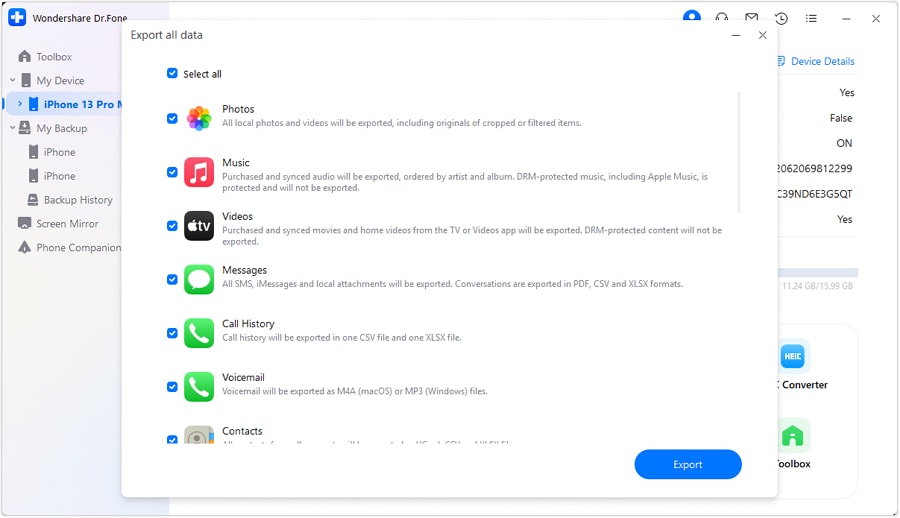
Step 3: Make a password for the backup file
Next, you will be asked to create an encrypted password for the backup file to be stored on the computer. Set a password, confirm it, and click “Done” to execute the process.
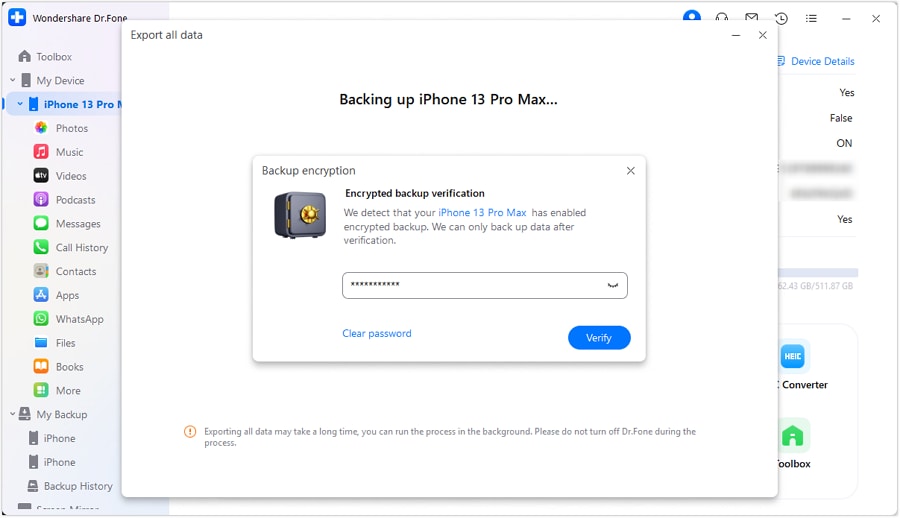
Step 4: Monitor the progress
Your iPhone will start exporting its data to the computer through Dr.Fone. You can wait and monitor the progress on the screen.

Step 5: Successful export of data to the computer
After successful completion of exporting the data, a window will appear on your computer screen. Click “Open” to review the exported data at the specified location.
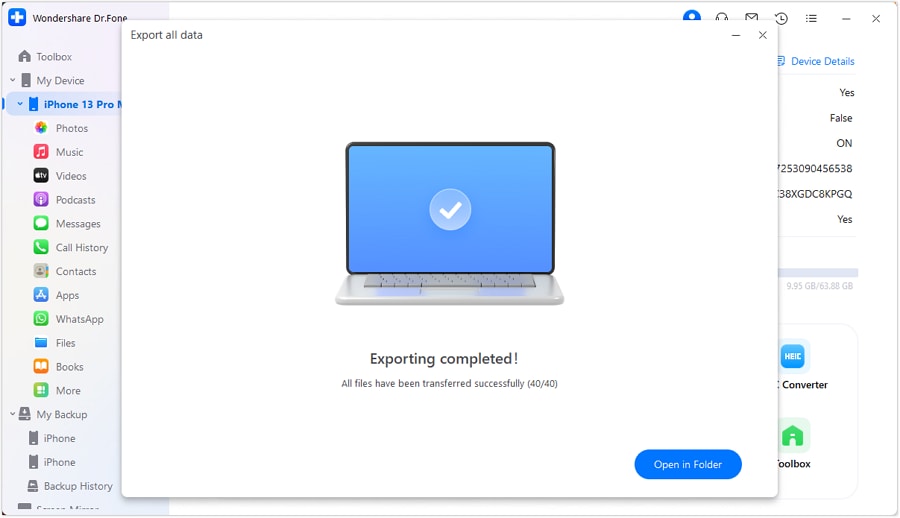
Conclusion
Before, you must have wondered how do you transfer pictures from Apple iPhone XR to PC. But after learning from the article above, you now have a variety of straightforward methods in your hand, whether with iCloud, Google Drive, iTunes, or reliable software like Dr.Fone.
If you’re embedded in the Apple ecosystem, iCloud provides seamless integration of your iPhone Photos. Alternatively, Google Drive offers a cross-platform solution, enabling you to upload your iPhone photos to the cloud and access them on your computer browser.
For those who prefer a more traditional approach, iTunes provides a straightforward method via a USB connection. And if you’re looking for a quick and versatile third-party solution, software like Dr.Fone simplifies the data transfer process with its user-friendly interface and robust features.
Also read:
- [New] Customizing Your Faithful Phone Tunes
- 2024 Approved Facebook Visual Posts Aspect Ratio Considerations
- 4 Quick Ways to Transfer Contacts from Apple iPhone 15 Pro to iPhone With/Without iTunes | Dr.fone
- 5 Ways to Send Ringtones from Apple iPhone 12 Pro Max to iPhone Including iPhone 15 | Dr.fone
- 5 Ways to Track Itel S23+ without App | Dr.fone
- 5 Ways to Transfer Music from Apple iPhone 8 to Android | Dr.fone
- Easy Methods How To Transfer Pictures From Apple iPhone 15 to PC | Dr.fone
- Get the Latest Lenovo ThinkPad Drivers with Ease – 100% Safe Download and Update Process
- How to Copy Contacts from Apple iPhone 8 Plus to SIM? | Dr.fone
- How to Transfer Everything from Apple iPhone 13 to iPhone 8/X/11 | Dr.fone
- iPhone Transfer Transfer Contact from Apple iPhone 12 mini to iPhone without iCloud | Dr.fone
- Meilleur Programme De Synchro Buffalo NAS Pour Un Backup Optimal ![Manuel Inclus]
- Solved Warning Camera Failed on Samsung Galaxy M14 5G | Dr.fone
- Unleash Stunning Videos Top 3 4K/8K Video Editing Tools
- Updated In 2024, RTMP Streaming on Instagram A Comprehensive Tutorial
- Title: How to Transfer Apple iPhone XR Data to iPhone 12 A Complete Guide | Dr.fone
- Author: Charlotte
- Created at : 2024-10-26 16:39:10
- Updated at : 2024-10-29 22:35:22
- Link: https://iphone-transfer.techidaily.com/how-to-transfer-apple-iphone-xr-data-to-iphone-12-a-complete-guide-drfone-by-drfone-transfer-from-ios/
- License: This work is licensed under CC BY-NC-SA 4.0.
